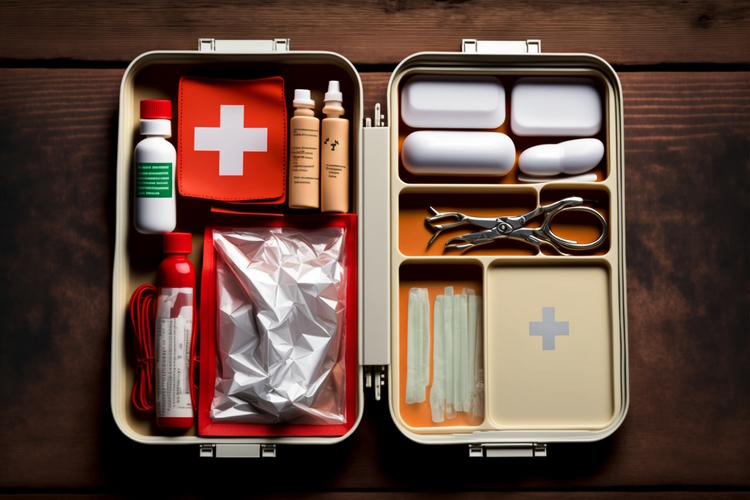First aid kit essentials
First aid kits are one of those purchases that you hopefully don’t need to use but will give you peace of mind just knowing it’s there. Accidents do happen, so a well-stocked first aid kit is important to be close at hand, whether that is at home, at work, in your car or on your travels.
With a well-stocked first aid kit, you will be able to provide instant relief to minor problems but more importantly, you can provide medical care in times of an emergency before a medical professional can get there. In this article, we’ll look at how to be prepared for the unexpected.
Also, we’ll take a look at the best way to safeguard and store your first aid kit essentials. For a business, first aid kits are a legal requirement in New Zealand. Having one close at hand makes sure you can look after the people you care about.
What to consider before you buy a first aid kit
What you need in a first aid kit will depend on a few things. It is essential to think about who will need it, what it could be used for and the best place to store it. You are hoping for the best but preparing for the worst.
Ask yourself is this for you and your family? Are there kids are elderly people in the house? Does it need to fit in a suitcase on holiday? Is it a kit for a work van, a large business or maybe you play sports and need something to keep in the car?
Every kit should cover the basics, with supplies of plasters, bandages, sterile dressings, pain relief, allergy medicine and other over-the-counter medications. Additional items like tweezers, scissors, thermometer strips, alcohol wipes or hydrogen peroxide wipes, or cotton balls and swabs are very useful.
Also knowing how to use the items in your first aid kit is vital. St.John offer first aid courses to help you make the most of the supplies you have.
Make sure everyone knows where the first aid kit is kept. Adults and children who know the importance of the kit should where they can grab it in an emergency.
The basics
- Adhesive Bandages and Dressings:
Whether you are four or forty, scrapes or minor cuts or blisters are common but not a drama if you have a variety of them available when needed. Make sure to include a variety of sizes to accommodate different wounds or just different-sized fingers. - Antiseptic Solutions and Wipes:
Antiseptic solutions, such as hydrogen peroxide or iodine, are vital for cleaning wounds and preventing infection. Antiseptic wipes are a convenient alternative, as they are individually packaged and sterile. - Sterile Gloves:
Disposable sterile gloves are a must-have item in any first aid kit. They provide a barrier between you and the patient, minimizing the risk of infection. Latex-free gloves are recommended for individuals with latex allergies. - Gauze Pads and Medical Tape:
Gauze pads are used to cover larger wounds, control bleeding, and absorb fluids. Medical tape is necessary for securing gauze in place. Including a variety of sizes will ensure you are prepared for different injuries. - Scissors and Tweezers:
Sharp scissors are useful for cutting tape, clothing, or gauze. Tweezers come in handy for removing splinters, thorns, or other foreign objects from the skin. Make sure these tools are clean and kept in a sterile condition. - Pain Relievers and Medications:
Over-the-counter pain relievers such as aspirin, paracetamol or ibuprofen can provide temporary relief for minor aches, pains, and fever. It is recommended to include a small supply of any essential prescription medications that you or your family members may need in case of an emergency. - Over-the-counter medication such as antiacid for sore tummies or sunburn relief cream, eye drops, throat lozenges or diarrhoea tablets.
- Emergency Contact Information:
Having a list of emergency contact numbers, including local hospitals, poison control centres, and personal contacts, is crucial. Include this information in your first aid kit, and make sure it is easily accessible. You can gather this information from local directories or online resources.
Advanced first aid kit essentials
- A more advanced first aid kit will help you respond more effectively to a wider range of situations.
- Defibrillators:
In more severe situations, knowing CPR (cardiopulmonary resuscitation) can be life-saving. - Include a CPR mask, which provides a protective barrier during rescue breathing, and a resuscitation device to aid in performing chest compressions. St.John have created an app that demonstrates how to perform CPR and use a defibrillator.
- Antibiotic ointment packets.
- An emergency blanket helps keep people warm and stops them going into shock
- A tourniquet to control severe bleeding.
- Burn kits
- Haemostatic gauze helps stop bleeding from life-threatening injuries
- An EpiPen to treat severe allergic reactions
- Torch and whistle
Storage and maintenance
Once you have assembled your first aid kit essentials, they should be stored in a cool, dry place. If any items are used, be sure to replace those supplies as soon as possible, so you are not caught out.
Many of the items will also have expiration dates, so gives your supplies a once over every now and again to check they are still good.
Choosing where to store them is also important. In an emergency, people are not always thinking clearly, so make sure everyone knows where your first aid kit is stored and that it is easily accessible.

Conclusion
There is no such thing as being too prepared for a medical emergency. Having all the supplies you need, in a safe, easily accessible place will at the very least, put your mind at ease and best case, you could save someone’s life.
You can buy first aid kit items here if you kit you need to re-stock or if you need to buy a first aid kit from scratch. Whether you are shopping for your household, your sports club or your business, a good online retailer will be able to supply all your needs.
